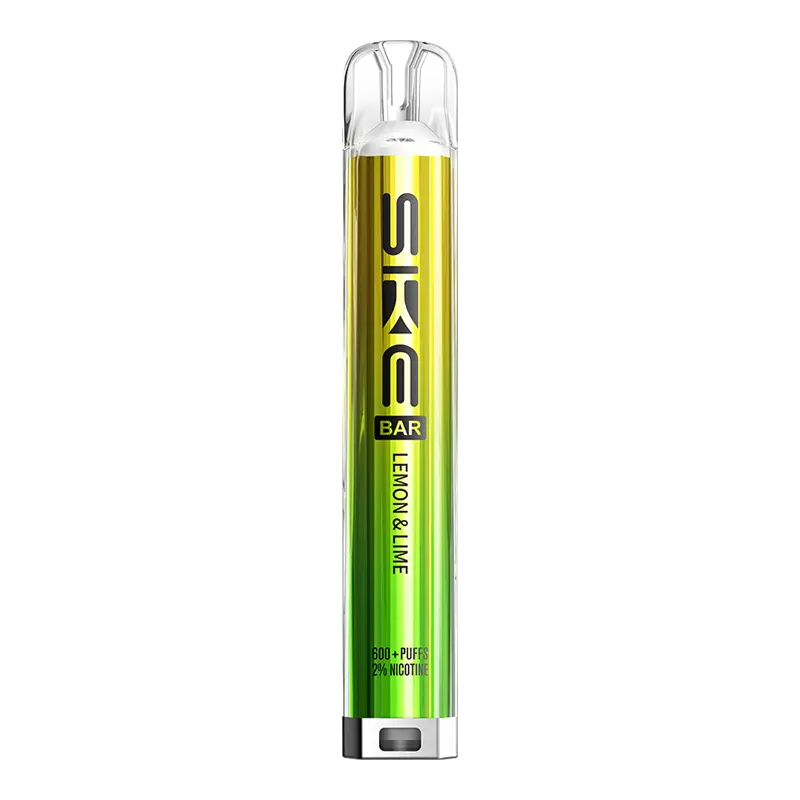Ohms Too High? Learn How to Fix It Today!
Ever found yourself staring at your vape, bewildered by the cryptic message flashing on the screen: "ohms too high"? It's like your e-cigarette is trying to communicate in some sort of electrical lingo you never signed up to learn. More than just a random error, it's a direct call to action, whispering — or rather, shouting — that something's amiss in the heart of your vaping setup. Buckle up as we decode what "ohms too high" means for your vape experience and how to master this challenge to ensure nothing stands between you and your perfect puff.

How to Check the Resistance of a Coil?
Grasping the resistance of your vape coil can be a step toward effective troubleshooting and is essential for tailoring your vaping experience to hit that sweet spot of flavor and cloud production.
Step 1: Secure the Right Tools
Your best allies here are a digital multimeter or a dedicated ohm meter designed for vaping applications — they're indispensable for their accuracy and affordability in providing the resistance readings you need.
Step 2: Gain Access to the Coil
Methodically disassemble your vape device, adhering closely to the guidelines laid out by the manufacturer, to expose the coil. It typically involves unscrewing various components of the tank or pod system, all while assuring that the vape is powered off and completely detached from any electrical sources to prevent potential hazards.
Step 3: Configure Your Measurement Tool
Adjust the settings of the digital multimeter to measure resistance, commonly indicated by the omega (Ω) symbol. An ohm meter, specifically tailored for vaping, is pre-configured for such measurements, simplifying your task.
Step 4: Establish Connections
With the coil exposed, connect the meter’s probes to it — one probe should contact the end of the coil while the other should touch the base where the coil integrates with the device’s circuitry. Confirm these connections are secure yet gentle to avoid compromising the coil’s integrity.
Step 5: Interpret the Displayed Resistance
Upon establishing a secure connection, the resistance value denoted in ohms will appear on your meter’s display, which is a direct reflection of the current resistance level of your coil, serving as a critical benchmark for evaluating its operational status.
Step 6: Evaluate and Act
Finally, collect the resistance reading you've obtained and compare it against the recommended resistance range specified in your coil’s documentation or available online. It will determine whether your coil functions within acceptable parameters or if discrepancies suggest a deeper investigation or possible replacement.

What Does "Ohms Too High" Mean on a Vape?
The alert "ohms too high" often appears when there is either a malfunction in the heating coil or an error in the device's reading of the coil's resistance.
Ohms, the unit of electrical resistance, measure how much the coil resists the flow of electricity. This resistance in vaping directly affects how quickly and efficiently the coil heats the e-liquid. Typically, vapes are designed to operate within a specific resistance range for optimal performance. If the resistance is too high, it shows the electrical current is being excessively blocked, preventing the coil from heating properly.
What Causes "Ohms Too High"?
Identifying the root causes of the "ohms too high" alert on your vape device is crucial for resolving the issue and keeping your vaping experience uninterrupted and enjoyable.
A. Incompatible Coil Use
It's one of the most common causes. Verify its compatibility with a specific vape device as different vapes operate within certain resistance ranges, and using a coil outside of this range can result in higher-than-expected ohm readings.
B. Poor Electrical Connections
It may be due to loose connections between the coil and the vape’s terminals or degraded contact points. Over time, connections can loosen or corrode, especially if the device is frequently used or poorly maintained, increasing the electrical resistance.
C. Residue Buildup on the Coil
As you vape, e-liquid components can deposit on the coil, insulating it and raising the electrical resistance. It's relatively common with sweeter e-liquids or those with higher vegetable glycerin content, prone to caramelizing at high temperatures.
D. Faulty Coil or Manufacturing Defects
Sometimes, the coil itself may be faulty or have manufacturing defects that cause higher resistance, due to improper winding of the wire, uneven spacing between coil wraps, or defects in the wire material that affect its conductivity.

E. Age and Wear of the Coil
Lastly, the natural aging and wear of coils with a finite lifespan can induce increased resistance since repeated heating and cooling cycles can change the properties of the metal in the coil over time.
F. Temperature Fluctuations
In cold conditions, the metal in the coil contracts slightly, increasing its resistance as the electrons find it harder to pass through a more compact structure. Conversely, excessive heat can damage its metal’s structural integrity, causing permanent increases in resistance due to deformities or breakages in the coil’s material.
G. Improper Installation
If the coil is not screwed in tightly, it may not make proper contact, which interrupts the electrical circuit and causes the e-cigarette to read a higher resistance. Misalignment can also result in uneven heating, which affects performance, and begets increased wear and degradation of the coil over time, further influencing resistance.
H. Quality of the Coil Material
The material and build quality of the coil directly influence its durability and performance under heat. Low-quality materials or those inappropriate for high temperatures (like certain grades of steel versus nickel) can oxidize or degrade faster, changing the surface and structure of the coil, and increasing resistance variably and unpredictably. In comparison, higher-quality materials generally maintain consistent resistance for longer, providing a more reliable vaping experience.
I. Software Errors
Advanced vape devices rely on firmware to control and monitor various functions, including resistance measurements. Software glitches can engender false readings or failure to adjust to real-time changes in coil resistance.
J. Battery Issues
A weak or nearly depleted battery won’t supply adequate power for the device to function properly, altering its ability to measure accurately and regulate the resistance.

"Ohms Too High" How to Fix?
Here are several effective strategies for troubleshooting and fixing high resistance in your vape device to quickly recover a smooth vaping experience.
Step 1: Verify Coil Compatibility
Firstly, check your vape’s user manual or manufacturer’s website for the recommended coil resistance range. If the installed coil is outside of this range, replace it with one that matches the specifications.
Step 2: Reinstall the Coil
Sometimes, simply unscrewing and then correctly reinstalling the coil can fix the issue. Make sure the coil is seated properly and screwed in tightly, but not overly so, as this can also cause connection issues. Check that all components are aligned and making good contact.
Step 3: Clean the Contacts
Use a small amount of rubbing alcohol on a cotton swab to clean the contacts on the coil and the e-cigarette gently. Allow it to dry completely before reassembling.
Step 4: Replace the Coil
If the above steps don’t resolve the issue, it may be time to replace the coil. A fresh coil can often remedy the problem.

Step 5: Check for Software Issues
Consider checking for updates or resetting the vaping device to factory settings to resolve the incorrect resistance reading errors.
Step 6: Inspect the Battery and Device
Inspect the battery for any signs of damage or wear and test it with another e-cigarette to confirm it functions correctly. If the battery is in good shape, the problem might be within the device’s internal wiring or electronics, which may require professional repair or replacement.
Step 7: Seek Professional Help
If all else fails, taking your e-cigarette to a professional or returning it to the manufacturer for a diagnosis can be the best course of action. Sometimes the issue might be more complex, involving internal components that are not user-serviceable.

Handling the "ohms too high" alert on your vape device doesn't have to be a daunting task. By comprehending what causes this issue and following the outlined steps to diagnose and fix it, you can keep your vaping experience smooth and satisfying again. Remember, keeping your e-cigarettes in top condition will help prevent future occurrences of the "ohms too high" message. Stay vigilant and enjoy the rich, flavorful clouds with a well-maintained vape!
TABLE OF CONTENTS
- How to Check the Resistance of a Coil?
- Step 1: Secure the Right Tools
- Step 2: Gain Access to the Coil
- Step 3: Configure Your Measurement Tool
- Step 4: Establish Connections
- Step 5: Interpret the Displayed Resistance
- Step 6: Evaluate and Act
- What Does "Ohms Too High" Mean on a Vape?
- What Causes "Ohms Too High"?
- A. Incompatible Coil Use
- B. Poor Electrical Connections
- C. Residue Buildup on the Coil
- D. Faulty Coil or Manufacturing Defects
- E. Age and Wear of the Coil
- F. Temperature Fluctuations
- G. Improper Installation
- H. Quality of the Coil Material
- I. Software Errors
- J. Battery Issues
- "Ohms Too High" How to Fix?
- Step 1: Verify Coil Compatibility
- Step 2: Reinstall the Coil
- Step 3: Clean the Contacts
- Step 4: Replace the Coil
- Step 5: Check for Software Issues
- Step 6: Inspect the Battery and Device
- Step 7: Seek Professional Help























